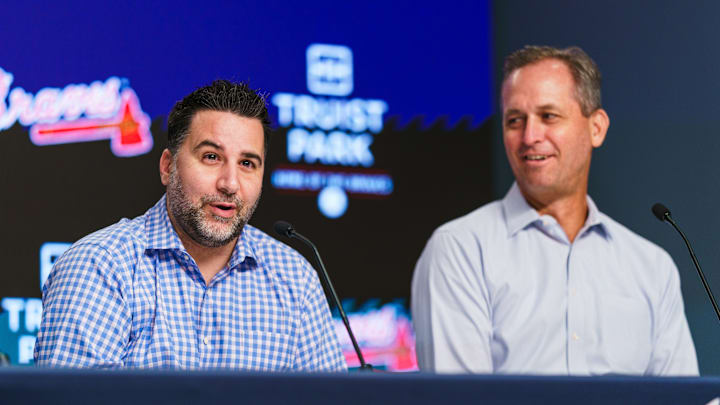What is the Braves 2024 payroll entering the Winter Meetings?

Here is a breakdown of the Braves projected AAV payroll as of 12/02/2023, per Spotrac.
Estimated Active AAV Payroll: $184,841,667
Estimated Player Benefits: $17,000,000
Estimated Minor League Contracts: $2,250,000
Estimated Pre-Arb Bonus Pool: $1,666,666
Active Subtotal............................................................$205,758,333
Now we have to add in the estimated projected arbitration salaries. Arbitration hearings are held between 01/29/24-02/16/24.
Estimated Arbitration AAV Payroll: $28,900,000
Estimated Pre-Arb AAV Payroll: $3,080,000
Arbitration Subtotal.....................................................$31,980,000
Total AAV Payroll........................................................ $237,738,333
What is the MLB competitive balance tax threshold in 2024?
Under the current Collective Bargaining Agreement, the CBT increases every season during the CBA.
2022: $230 million
2023: $233 million
2024: $237 million
2025: $241 million
2026: $244 million
What dictates how much more money the Braves can spend this offseason?

This is the question everyone is asking.
Taking what we know from the previous two sections, the Braves are already projected to be a hair over the competitive balance threshold as they prepare for the Winter Meetings. Remember, the CBT is assessed at the end of the season, so with mid-season acquisitions, the Braves will likely be comfortably over the luxury tax in 2024 by the season's end. Last year, they started at $240 million and ended at around $250 million.
The Braves projected AAV payroll is already $783,333 over the threshold and they only have 33 players on the 40-man roster.
Last year's tax threshold was set at $233 million and the Braves entered the season about $7 million over it. Alex Anthopoulos and Chairman Terry McGuirk have both indicated that the Braves will increase payroll in 2024. Remember, the second level of the tax threshold? The Braves left plenty of room last season, beginning the year about $13 million under and finishing about $3 million under it. The Braves' increase in payroll in 2024 should be moderate, commensurate with the competitive balance tax threshold increase, which increased from $233 million to $237 million.
The tier two limit is $20 million over the CBT threshold of $237 million. That means we can assume the Braves won't exceed the $257 million mark in AAV payrolls. We probably want to allow $5-10 million in cushion for mid-season acquisitions. That means the Braves have about $10 million in average annual value to spend on seven roster spots.
So, don't expect Shohei Ohtani unless the Braves are willing to dive into the deep end of the luxury tax water. Again, I don't think anything like that is going to happen. I expect the Braves to stay comfortably under the second threshold of $257 million to allow for mid-season deals or potential increases at the deadline.
Next: Terry McGuirk's comments on increasing the payroll in 2024
